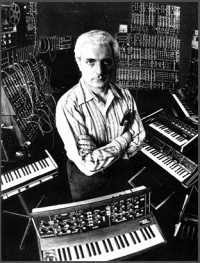
(08.24.05) THE MUSIC of heaven has grown one note sweeter. Robert (Bob) Moog,
father of the Moog Synthesizer, Big Briar Theremin, and countless
innovations in the world of sound synthesis, has passed on at age 71.
Robert was diagnosed with glioblastoma multiforme, a form of brain
cancer in April of 2005, and attempts to combat the disease by way of
chemotherapy and radiation were unsuccessful. He leaves behind his
wife, five children, and a galaxy of grieving musicians.
Robert Moog was born May 23, 1934. By the age of 15, the New York City
native was building Theremins with his father. Inspired by the likes of
experimental composer Herbert Deutsch, Moog began building synthesizers
in 1964. Response to his first Moog Modular, which debuted at the 1964
Audio Engineering Society Convention, was so positive that Bob took his
first orders on the spot. By the time he received his PhD from Cornell
University in 1965, Moog had already delivered and installed several of
his modular units at institutions and high-end studios throughout the
country.
The popularity of the Moog Synthesizer exploded in 1968 with the
release of the platinum selling Switched on Bach by Wendy (Walter)
Carlos. The album showcased the amazing tonal range of the Moog and
consequently created an increased demand for the instrument. In 1970,
Moog Music introduced the MiniMoog, a portable instrument which found
its way into the coffers of bands like Yes, The Beatles, The Rolling
Stones, and scores of funk and disco bands who were itching for
creative new sounds.
In the many years between the prosperous 70’s and current times, Moog’s
company changed ownership several times, eventually closing its doors
in 1987. Shortly after, Robert founded Big Briar and began making
Theremins, effects pedals, and (eventually) synthesizers in the Western
mountains of North Carolina. It was during this time that Moog
partnered with the Bomb Factory to create a line of software plug-ins
for Pro-Tools. In 2002, Robert Moog regained the rights to the Moog
Music name and created the marvel of synthesizer technology known as
the Minimoog Voyager, a suped-up MiniMoog D with expandability via
Moog’s line of MoogerFooger Pedals and VX-351 Expander.
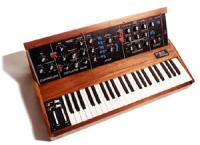
The sound of the Moog synthesiser can be heard in almost every genre of
music, in countless recordings, from the smallest micro-labels to
Grammy winning releases by Wendy Carlos and Stevie Wonder. Owners of
Moog synthesizers have been known to develop lasting bonds with their
instruments – that or they will tell you a story about how much they
regret selling/trading it (the author has three such stories). Robert
Moog and his band of merry machine-makers have given us a legacy of
amazing and fun musical instruments — one which now has an analog
angel in heaven, watching from the cleanest, white Moog Modular rig
ever imagined. We will miss you Bob, godspeed. We’ll keep the knobs
turning for you.
::..:::…..:..::….:::::..:::..:::::::……:::…::.:::….::::..:..:::…::…….:::::
Five Essential Moog Albums (according to R_Garcia) ::
Five Interesting Moog Facts (culled from the Bob Moog Wiki and CNN) ::
Rockmore, an accomplishment which he considers as a high point of his professional career.
in May 2004 to mark a half-century since Moog founded his first company while still in college. Keith Emerson, Rick Wakeman of Yes, and Bernie Worrell of Parliament/Funkadelic were among those who played, and a second Moogfest was held a year later.
::..:::…..:..::….:::::..:::..:::::::……:::…::.:::….::::..:..:::…::…….:::::






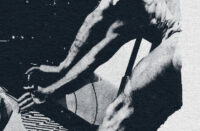



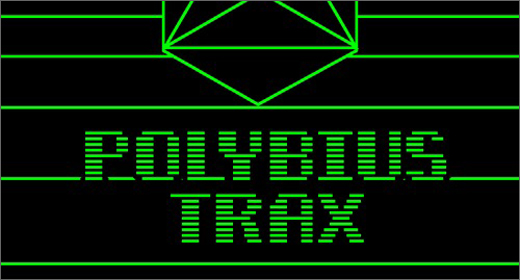

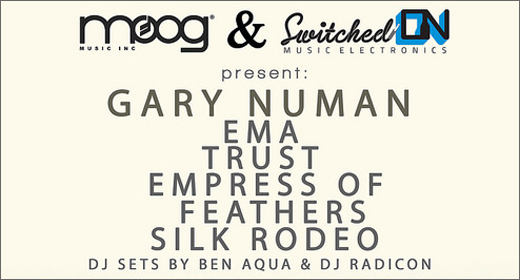
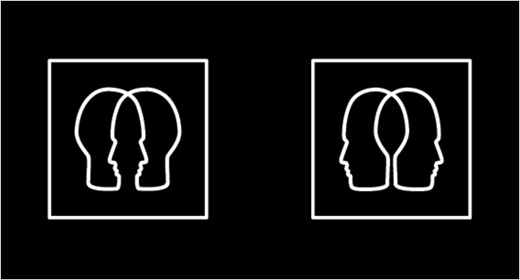

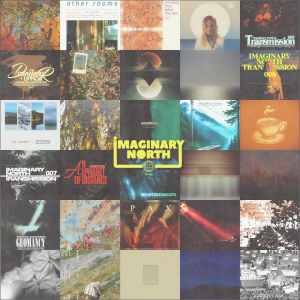

![Romanowitch :: A critical season substitute (glitch.cool) — [concise]](https://igloomag.com/wp/wp-content/uploads/2025/03/romanowitch-a-critical-season-substitute_tape_feat-75x75.jpg)







